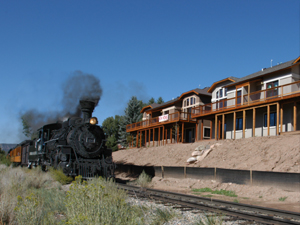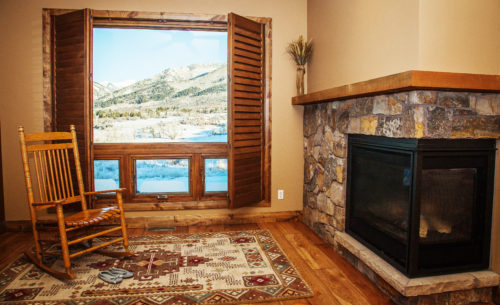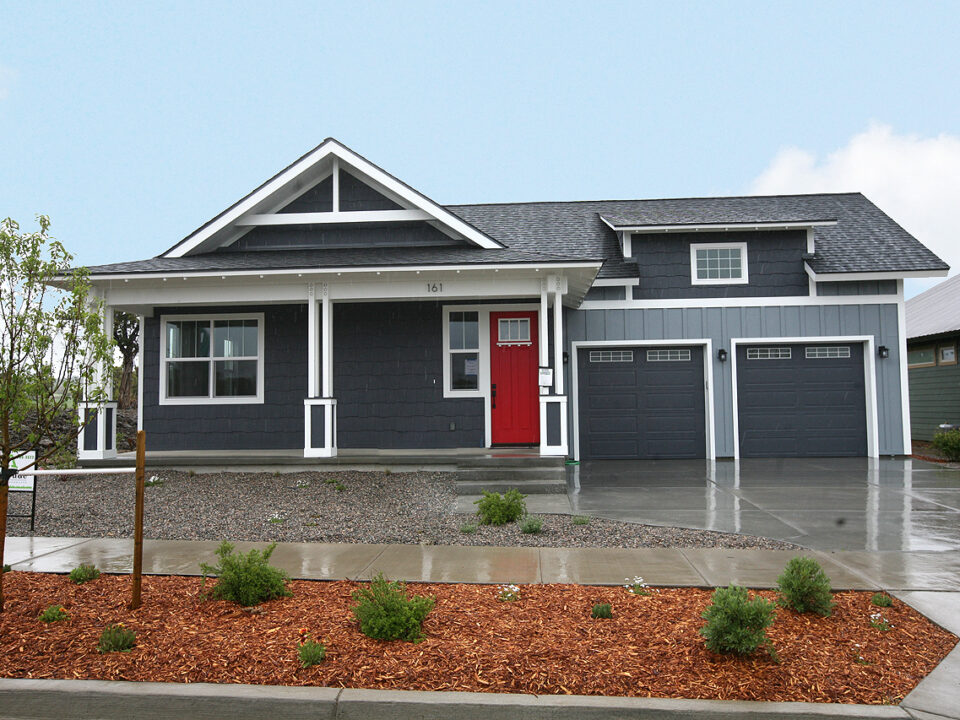Customize Your Durango Home!
May 22, 2016
Creating a Dynamic Outdoor Living Space
June 27, 2016We live in such a bright and beautiful place. Durango typically has around 300 sunny days per year, so taking advantage of all that natural light is a must when planning your custom built home. There are numerous things to consider when planning to fully embrace all of that natural light. Luckily, when you’re building your home from the ground up you can take every step available to you in order to bring in the rays.
Naturally, when living in this sun-filled environment solar panels are a wonderful option for converting the power of light into energy in our homes. But, you can go beyond solar panels in the planning of your home to take full advantage of what the sun has to offer. You can utilize direct sunlight in a plethora of ways in your custom home to create a bright, warm and energy efficient environment.
When you begin to consider how to best incorporate sunlight into your custom home your mind will likely jump first to windows. Indeed, windows will be the primary means by which you’ll be bringing all of that sun into your home, but in order to maximize the effectiveness of those windows, there are things one should take into consideration in the early planning stages.
When deciding on room placement while planning your home be sure to consider what type of light you’d like each room to receive and how to achieve this. One of the easiest and earliest ways to plan for this is to visualize which direction they’ll be facing once the house is built.
Most people are familiar with the versatility and effectiveness of south-facing windows. Allowing the most winter light, when we rely more heavily on passive solar heat, but limiting direct sun in summer when less heating is desirable, south-facing windows are a great choice for rooms that make up the majority of your living area. These larger rooms, such as your living room and kitchen, will allow the winter heat to disperse throughout the house and are likely to be the areas in which you will spend the greatest amount of your waking time.
On the other end of the spectrum, north-facing windows will receive even, filtered, natural light year round without getting much direct sunlight. Rooms that might work best with north-facing windows are rooms in which you don’t spend a predominate amount of time. Laundry rooms, craft rooms, and bathrooms are not as high of a priority when it comes to heating, but will still benefit from the gentle light that your northern windows will provide.
When it comes to deciding which wall to put bedrooms on you must first consider the habits of the people who will be sleeping in those rooms. For an early riser, east-facing windows will likely be a desirable feature. East-facing windows will bring in the most morning sun to greet the early risers in your family. For this same reason, an east-facing window would be a challenge for someone who likes to sleep in.
Dining rooms and breakfast nooks are natural choices for east-facing windows; start your day with coffee and breakfast as you soak in that soft morning sun. On the opposite side of the house, you can count on strong evening light through your west-facing windows. If you’re fond of watching television at the end of your day keeping your entertainment room on the opposite side of the house is advisable as this direct sunlight will keep any west-facing room full of robust light until the sun dips away.
Creating an open concept design is another great way to welcome as much light as possible into your custom home. The smooth transition from room to room will assist the flow of light into areas of your house that don’t have windows of their own. Try to position interior rooms, those that will not have their own access to windows, in such a way that they will benefit from the free flow of sunlight. You can keep your future home aglow with a little forethought in the planning process.
You may think that once the sun slips behind the mountains you can no longer rely on the heating power of the sun. But, a thermal mass is yet another great way to fully utilize the sun’s heat. A thermal mass can take many forms with the defining characteristic being that it can absorb a great amount of heat throughout the day and slowly release this warmth back into its surrounding environment once the source of heat is gone. Think of leaning against a brick wall once the sun has gone down and feeling all the warmth that is still trapped in the bricks. In summer, a thermal mass should be shaded from the sun so that the heat it absorbs throughout the day will be drawn from the inside of your house and actually assist in keeping your interior cooler. If exposed brick walls don’t fit into your vision for your custom home consider other options that will serve as a thermal mass. Adobe or concrete walls, a large stone fireplace, or dark tiles or a concrete slab for flooring can all effectively collect and hold warmth throughout the day and generously release it back into the air at night.
With all this work done to bring the light and warmth inside you won’t want to neglect planning for the depths of summer when all of that light and heat becomes less desirable. That same passive solar effect that helps to keep you comfortably warm in winter can also turn your house into a sauna in the summer months. Something as simple as an overhang from your roof can make a great deal of difference in modulating the temperature inside your house. An overhang of the right length should drop low enough to provide shade for your windows in summer, but still allow the low-hanging winter sun to reach into your home. This little bit of strategic shade can make all the difference in keeping a cool house in summer and a cozy one in the winter months.
Planting vegetation around your custom home can add not only a desirable verdant touch of nature but provide additional shading when it’s needed. Deciduous trees, those that grow leaves in spring and lose them in fall, provide natural shade that automatically adjusts to the amount of coverage you need. Those summer leaves provide ample shade, but still allow a soft glow of filtered brightness. In the winter, when those leaves are shed, the bare branches allow light to pass through unimpeded. Large deciduous trees can also shade parts of your roof, thereby helping to keep your attic from getting overly warm and allowing heat to spread into your house from those areas.
Once the planning is done and your beautiful custom home is built there are still further ways to maximize the effect of natural light in your home. Consider the materials that you are using to decorate and accent your design. Large white or light surfaces will reflect light and will make a room appear larger. You can contrast these bright colors with darker, dense materials intended to absorb solar heat (once again tapping into that thermal mass effect). Plan to use these warmer colors on surfaces such as floors or cabinets that will naturally be in more direct contact with the sunlight.
Energy efficient shades or blinds can both serve a practical effect in helping to modulate the temperature in your home throughout the year, but also be an appealing aspect of your interior design. In winter, closing your shades after the sun goes down helps to hold the heat in while the icy winds blow outside. And, of course, in summer months when shades are drawn, they will assist in keeping the sun and heat from permeating into your cool interior. Choosing energy efficient versions of the shades you love will increase these effects to maximize your control over the temperature in your home. Honeycomb or cellular shades can be effective insulators and are often the “go-to” for many homeowners looking for energy efficient window covers. While these are a great option, don’t feel as if these are your only route for efficiency. Many other types of blinds and shades, from plantation-style to drapes, can be duly efficient. Looks for materials that will be able to trap air or have an additional lining that will lend an insulating aspect to the window coverage. For further efficiency and versatility consider combining or layering different styles of window coverings.
All of this sun that we are so lucky to live in is one of the best free resources that we have access to in Durango. It only makes sense to take full advantage of this when you are planning and building your custom home. With some careful consideration towards where and how you will be building and what materials you choose to use you stand to keep yourself in happy balance with the sun for years to come!


